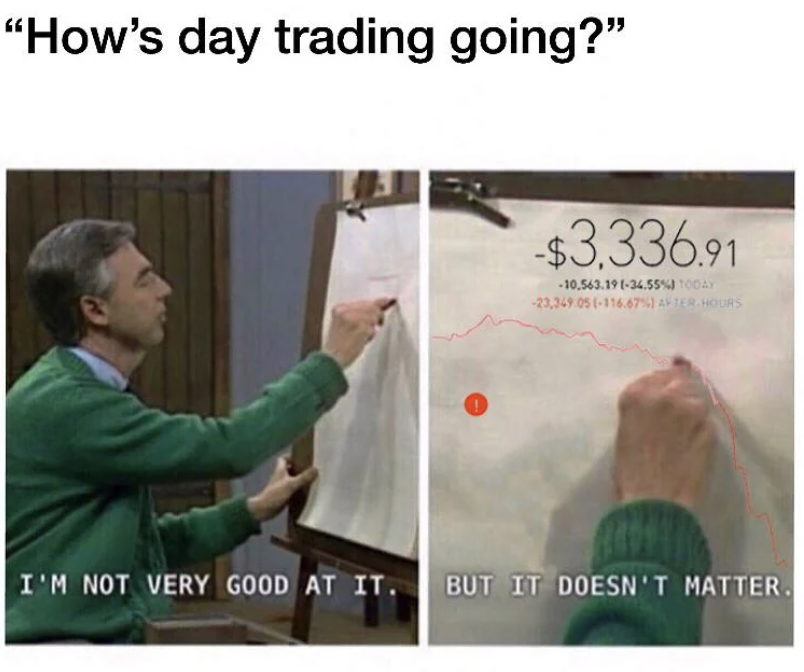Day trading stocks: Here is what it involves and is it better than long-term investing?

In recent years, day trading stocks has become an increasingly prominent investment opportunity, enabled by modern technologies like trading apps that enable trades to occur instantaneously. The COVID-19 pandemic bought this investment strategy to the fore when a new generation of investors opted to invest in shares for the first time and exploit volatile share prices to profit for themselves.
What is day trading and why is it popular
Day trading is an investment strategy that involves the buying and selling of shares (or other financial instruments like futures and bonds) within the same trading day on an exchange, whether the ASX or another bourse. Traders take advantage of small price movements and often leverage large amounts of capital to do so. This practice is starkly different from long-term investing, where the focus is on the potential for growth or income over an extended period.
Long-term investors are typically less concerned with short-term market fluctuations and more interested in the underlying value and performance of their investments over years or even decades. Day trading has gained immense popularity in recent years, especially with the rise of online trading platforms. It appeals to many as a get-rich-quick scheme and promises high returns within a short period. And indeed, some day traders do indeed achieve it.
Even for investors who have mixed results, there are some advantages. Most notably that day trading doesn’t incur overnight risks since positions are typically closed before the market closes. This strategy allows for high leverage and the potential to profit in both rising and falling markets, offering flexibility and diversity in trading options.
However, day trading comes with its own set of risks and disadvantages.
What are the risks of day trading stocks?
One of the biggest disadvantages of day trading is the high level of risk involved. With frequent buying and selling, the potential for losses is significantly higher. This risk is further heightened by the practice of leveraging or borrowing money to increase the value of an investment. A small drop in the share price can result in significant losses and even lead to a margin call, where traders are forced to deposit more funds into their account.

Source: WallStBets/Reddit
Moreover, day trading requires extensive knowledge and experience in financial markets. Investors need to constantly keep track of market trends, news, and changes in regulations that may affect their investments. This level of attention can be both physically and emotionally demanding, leading to high levels of stress and burnout.
Another disadvantage of day trading is the high commission fees associated with it. With frequent buying and selling comes a need for multiple transactions, which translate to higher commission rates for brokers. These fees can quickly add up and significantly reduce the profitability of a trade.
Furthermore, with day trading, there is no guarantee of success. The stock market is inherently unpredictable, and even the most experienced traders can make mistakes or encounter unexpected events that lead to losses. This lack of certainty makes day trading a risky venture for those looking to invest their hard-earned savings.
Lastly, day trading does not offer the same tax benefits as long-term investing. In many countries, profits from investments held for less than a year are taxed at a higher rate compared to those held for longer periods. This means that day traders may end up paying significantly more in taxes, further reducing their potential returns.
Conclusion
In conclusion, while day trading may offer the potential for high returns, it is not without its disadvantages. The risks involved, high commission fees, demand for extensive knowledge and experience, lack of certainty, and reduced tax benefits are all factors that investors should consider before engaging in this investment strategy. It is important to carefully weigh the pros and cons, have a solid understanding of the market before jumping into day trading and most importantly an understanding that it just might come down to luck, no matter how astute you think you are.

Source: WallStBets/Reddit
What are the Best ASX Stocks to invest in?
Check our buy/sell tips

Blog Categories
Get Our Top 5 ASX Stocks for FY26
Recent Posts
Diversifying Portfolios with ASX Consumer Stocks: Opportunities and Risks
The ASX 200 has delivered significant volatility recently, and market participants observing the screens in 2025 understand the turbulence firsthand.…
Is Lendlease (ASX:LLC) out of the doldrums for good?
Lendlease (ASX:LLC) has for the past several years been the classic definition of a ‘value trap’. You think a good…
Here are the 2 most important stock market taxes that investors need to be aware on
As one of two certainties in life, investors need to be aware of stock market taxes. Investors may be liable…


